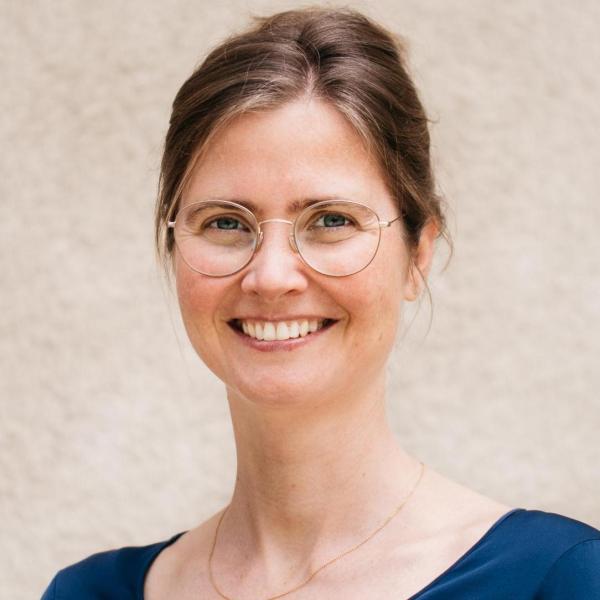Katja Doose
Dr
Senior Researcher
Department of Geosciences
Biography
Katja Doose is an environmental historian and a historian of science for Russia and the Soviet Union. Since she finished her PhD at the University of Tübingen in 2018, that explored the 1988 Armenian earthquake and its socio-political implications, she has researched and taught at the University of Birmingham, the Advanced School of Social Sciences in Paris (EHESS) and the Centre for International Environmental Studies of the Graduate Institute (IHEID) in Geneva. Her research focuses on the history of Russian and Soviet earth science and the experiences of human-nature interactions from the late 19th to the 20th century. She is currently working on her book manuscript entitled "White Coal for white gold. An environmental history of glacier studies in Central Asia". Since March 2021 she is a senoir researcher in the SNF funded project "The History of Soviet glaciology in Central Asia" headed by Christine Bichsel. Since June 2024 she is the project leader of the SNF project "Myths of equality. A gendered history of Central Asia, 1870-1970" (2024-2027).
Research and publications
-
Publications
36 publications
Soviet Climate Change Science: Domestic Debates, International Collaboration and Future Climates
Jonathan D. Oldfield, Vladimir Jankovic, Katja Doose, Nina Kruglikova, Denis J.B. Shaw, Julia Lajus (2025) | BookTektonik der Perestroika: Das Erdbeben und die Neuordnung Armeniens, 1985–1998
Katja Doose (Göttingen: Böhlau Verlag Köln, 2019), ISBN: 978-3-412-51327-6 | BookArchitekturführer Taschkent
Philipp Meuser, Götz Burggraf, Klaus Hartung, Tulkinoj Kadirowa, Marcus Bensmann, Alischer Sabirow, Rawschan Nasarow, Johannes Dahl, Katja Doose, Romy Lehns (Berlin: DOM Publ., 2012), ISBN: 978-3-86922-165-6 | Book -
Research projects
Myths of equality: the gendered history of science in Central Asia (1870-1970)
Status: OngoingStart 01.10.2024 End 30.09.2027 Funding SNSF Open project sheet This research project investigates the influence of gender on scientific practices in Central Asia's Pamir Mountains from the 1870s to the 1970s. By examining the experiences of female and male scientists, we aim to understand how gender dynamics shaped scientific knowledge in remote environments. While there is a growing body of literature on the history of gendered science, it is very much focused on experiences in circumstances in Western, democratic countries. We will focus on gendered science in Central Asia. Our objectives are: (1) to analyse gender identity negotiation among female scientists, (2) to explore how male scientists constructed their gender identities in remote areas and (3) to investigate gender's intersection with ethnicity in shaping scientific practices. We employ archival research, visual analysis, and interviews with scientists from the Soviet era. Our research will broaden the understanding of gender's role in science, enhancing the historiography of Central Asia and the history of science. Myths of equality: the gendered history of science in Central Asia (1870-1970)
Status: OngoingFedchenko: An Eco-Biography of a Glacier
Status: CompletedTimescapes of ice: Soviet glacier science in Central Asia, 1950s-1980s
Status: OngoingStart 01.03.2021 End 31.08.2026 Funding SNSF Open project sheet This project researches the history of Soviet glaciology in the Pamir and Tian Shan mountain systems. Pamir and Tian Shan are part of the Third Pole, the Earth’s third-largest ice store next to the Arctic and Antarctic regions and Alaska. The Third Pole experiences a general trend of deglaciation. There is a lack of systematic glaciological ground measurements of the Third Pole. In order to estimate changes in ice cover, and their social and environmental consequences, scientists upscale the only available measurement data to regional and global levels. Yet little is known about why and how this data is available for upscaling today. This is problematic, as the upscaling of historical data has methodological, political and ethical implications. This project examines the social and material practices, geopolitics and epistemology of Soviet glaciology in order to shed light on the history of glaciological measurements in the Pamir and Tian Shan. In particular, it examines Soviet “timescapes of ice”, i.e. the temporal concepts and practices of Soviet glacier science. The project is guided by four objectives. First, the project aims to further the history of physical geography as a science through a study of Soviet glaciology. Second, it aims to advance the environmental history of the Cold War period through a study of Soviet glacier science in Central Asia from the 1950s to the 1980s. Third, it aims to strengthen the connections between environmental history and the history of sciences through conceptual and methodological innovation. Fourth, it aims to advance the interdisciplinary dialogue between the social and natural sciences of climate change through the historical contextualisation of Soviet glacier measurement data. The main research question interrogates how Soviet glacier science in Central Asia during the 1950s to the 1980s produced timescapes of ice. The four concepts of timescapes, disciplinary space, geopolitics, and strata are mobilised to answer this research question. The project adopts case study research as an approach. Case studies will be carried out on the history of glacier science on Abramov (Kyrgyzstan) and Tuyuk-Su glaciers (Kazakhstan). The methodology of the project entails library and archival research. Data collection will involve a total of 26 months of fieldwork in Kazakhstan, Uzbekistan, Kyrgyzstan and the Russian Federation. This project is intended to contribute to the history of physical geography as a science, further the environmental history of the Cold War period, strengthen the connections between environmental history and the history of sciences, and advance the interdisciplinary dialogue between the social and natural sciences of climate change

